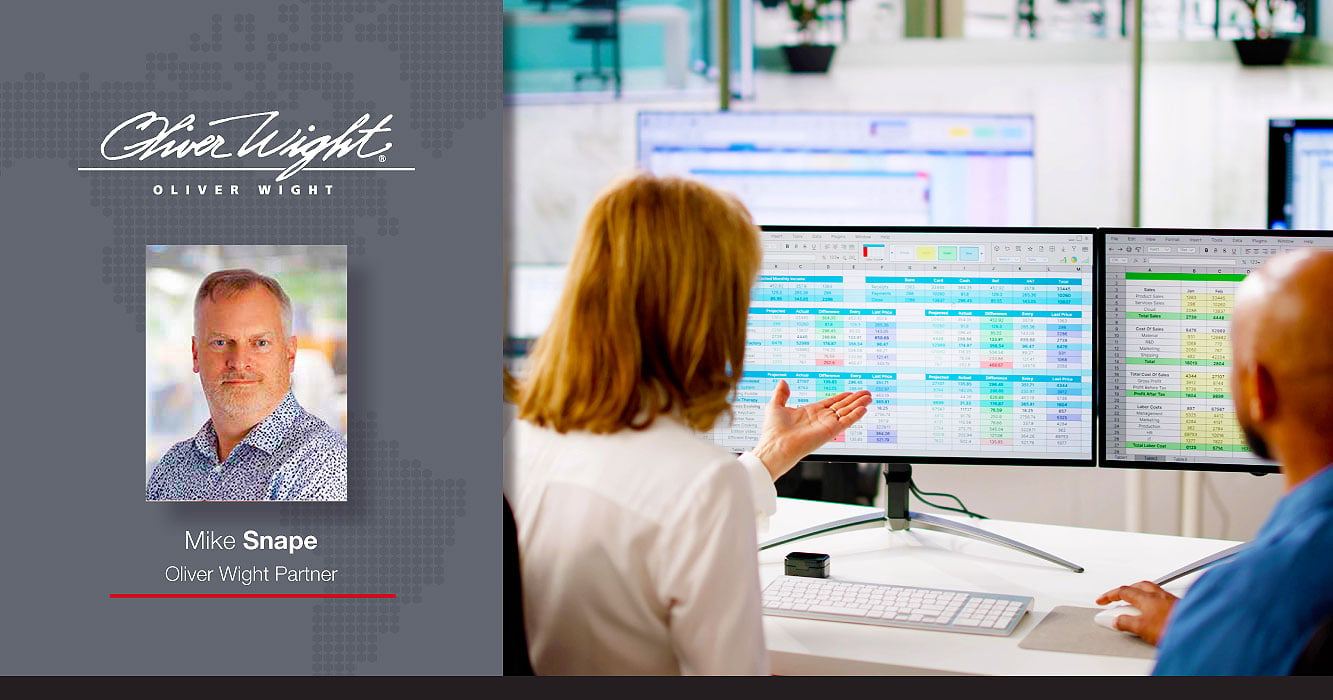When your Excel 'masterpiece' meets reality – and loses
08 Oct 2025
Blog

This blog covers:
- Why individual expertise can blind us to systematic solutions already available
- How businesses unknowingly perpetuate inefficient processes by avoiding unfamiliar systems
- The difference between genuine best practice and what we convince ourselves works well
"You only know what you know."
The above may seem an obvious statement, yet it has shaped my entire career.
I first heard it many years ago while working as a production planner, having just been told rather bluntly by our Oliver Wight coach that my planning skills weren't as good as I thought they were. The thing is, I genuinely believed I was doing quite a good job.
My process seemed logical: create a plan in Excel, print it off, hand it to production, and expect it to be followed. I'd developed this by meticulously trawling through the sales orders file (another Excel spreadsheet) and identifying which products we needed to run in each manufacturing unit. I'd then cross-reference this against another Excel file showing current inventory levels and, from there, could determine what we needed to make.
I was rather proud of this system. Before my "superior approach", the manufacturing unit received a list of sales orders and was expected to sort things out themselves, hopefully making the stuff in the right order and at the right time to meet customer orders.
When confidence meets reality
The business had decided to improve efficiencies and customer service by engaging Oliver Wight as consultants, with the ambition of achieving Class A in Planning and Control. Class A Planning and Control is based on a set of definitions that describe what should be in place to ensure your planning and execution processes work at a prescribed level of performance, containing all the required attributes for reliable and consistent outcomes. At that point, I didn't know this. I had no idea what it was about. Besides, I'd created this superior planning system, which I considered best practice.
At my first meeting with our Oliver Wight coach, I was asked to provide a copy of the production plan. A smug version of myself, proud of my work, quickly printed off my Excel spreadsheet and passed it over. I folded my arms and sat back, thinking this would be easy he is sure to be impressed.
"That is not a plan," said the man holding my carefully crafted document.
"Yes, it is," I replied.
The next few minutes resembled something from a pantomime, with the back-and-forth of "no, it's not" and "yes, it is" until the consultant grew impatient and asked to use my desktop to show me where the plan should actually come from.
He quickly tapped my keyboard to pull up a work-to-list from our Enterprise Resource Planning (ERP) system and began explaining that this should be the source of our plan. I'd never seen this transaction before. We used the system to create, release, and book production after completion by creating work orders, and that was the extent of my interactions with the green-screened system that held all the interest for me of a trip to the supermarket on a drizzly Sunday.
I'll admit I didn't even know why we released orders before booking production. It was simply something I'd been told to do.
A great revelation
The consultant proceeded to explain that the work-to-list was invalid, pointing out the many past-due and partially completed orders. He walked me through the implications and how these orders linked to lower-level material plans that procurement used. He explained how routings and bills of materials worked, how the system pegged to sales orders, examined inventory levels, and calculated what needed to be made and when.
He was effectively explaining the principles of material requirements planning (MRP) to me.
Suddenly, I realised that my planning process, which I'd considered best practice, seemed more like bad practice. Understanding that this green-screened system could handle all of this without requiring me to trawl through and compile Excel spreadsheets prompted me to explore this MRP concept further.
The discussion left me wanting to learn more about the ERP system's capabilities and the planning and control approach that, to my amazement, was set out and described in what was then the Class A Checklist for Business Excellence.
A lasting lesson
My learnings from that day always make me consider what I don't know. It's more than likely that someone has already found a better way to do something I'm struggling with, or that a solution already exists for a problem I'm facing.
My other learning concerned "best practice" and "world class" – these terms aren't necessarily what they claim to be. Over my 10 years with Oliver Wight, I've encountered countless businesses that want to be world-class or implement best practices. When I challenge them about what that actually means, they struggle to define it. I discovered that people within the same organisation hold entirely different views about what these terms represent.
They don't know what they don't know.
A rather uncomfortable truth is that individual expertise, however well-intentioned, can close our eyes to systematic solutions that already exist. Before assuming your current approach represents best practice, it's worth asking whether someone else has already solved the problem you're trying to address – and whether the tools to implement that solution might already be sitting right in front of you.
Every planner has their “Excel moment” - but lasting excellence comes from seeing the bigger picture. Learn how Oliver Wight helps businesses uncover better ways of working and turn planning into a competitive advantage.
Find out more
Author(s)
-
